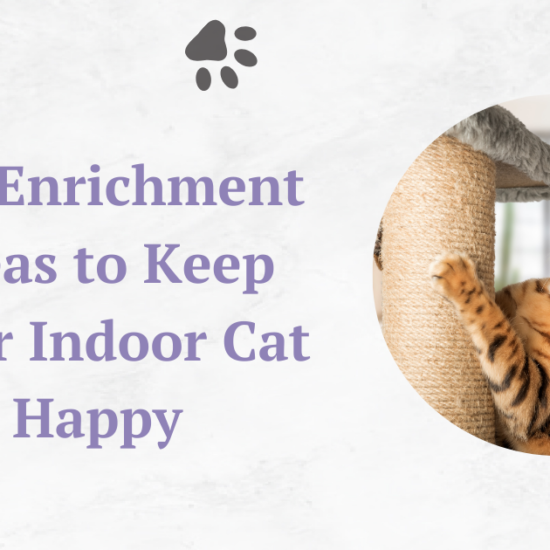The decision to add a new pet to your life is thrilling, but it also comes with a plethora of options. One of the most important decisions you’ll have to make is whether to adopt a pet from a shelter or rescue group or become a foster parent for a homeless animal. Pet adoption and foster care each have their own set of benefits and drawbacks, and making the appropriate decision takes careful consideration of your lifestyle, tastes, and the needs of the animals involved.
Table of Contents
Introduction
In this detailed article, we will dig into the intriguing world of the most trainable cat breeds, their distinct qualities, and the complexities of training to grow your feline friend’s talents and behaviors. This article will help you understand your cat better and provide vital insights into efficient training methods, whether you have a playful Siamese, a beautiful Persian, or a stately Maine Coon.
Understanding Cat Breeds
Cats are available in a variety of breeds, each with its own unique set of traits such as size, coat length, temperament, and behavior. It is critical to become acquainted with the various most trainable cat breeds in order to better understand your cat’s requirements and preferences. In this section, we will look at some of the most popular breeds and their distinguishing characteristics.
- Siamese Cats

Siamese cats are distinguished by their distinctive blue almond-shaped eyes, sleek and thin bodies, and short, close-lying coats with color spots on the ears, face, paws, and tail. They are very talkative and gregarious cats, and they frequently build close ties with their human friends.
- Persian Cats

Persian cats are well-known for their long, silky fur, flat features, and kind demeanor. They are often quiet and prefer a peaceful atmosphere. Regular grooming is required to keep their lovely coats in good condition.
- Coon Cats from Maine

With muscular bodies, tufted ears, and thick, water-repellent fur, Maine Coon cats are among the largest domesticated cats and are counted among the most trainable cat breeds. They are gregarious and outgoing, and they frequently form deep bonds with their families.
- Bengal Cats
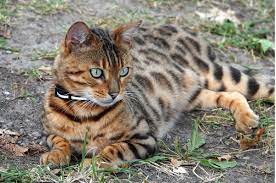
Bengal cats are noted for their lively and playful behavior and have distinctive leopard-like patches on their fur. To stay happy and healthy, they require a lot of mental and physical stimulation.
- Ragdoll Cats

Ragdoll cats are large and docile, with an affectionate and calm attitude. They are wonderful companions for anyone looking for a gentle and affectionate cat, as they typically go limp when held, earning the moniker “Ragdoll.”
Understanding your cat’s breed-specific characteristics can have a significant impact on how you approach training and care. Siamese cats, for example, may require more engaging play to channel their energy, while Persian cats may require regular grooming to prevent matting. Knowing your cat’s breed will allow you to adjust your training approaches to their specific demands, resulting in a happier and healthier feline companion.
Cat Communication and Behavior

Let us get into the details of the best cat breeds and training by learning about their behavior.
- Interpreting Feline Body Language
Cats communicate with us via body language, and knowing their cues is critical for effective training. Among the most common feline body language cues are:
- Tail Placement

A cat with a straight tail is usually cheerful and confident.
A puffed-up tail indicates fear or hostility.
A scared or worried cat has its tail tucked between its legs.
- Chewing
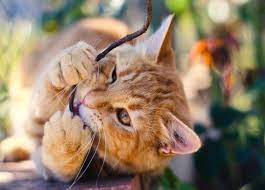
Purring is commonly linked with happiness; however, cats may also purr when they are in pain or stressed. Understanding the meaning behind the purring is dependent on context.
- Ears
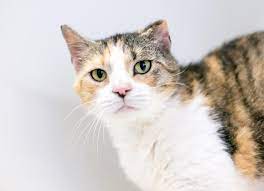
Forward-facing ears show inquiry or curiosity, whereas flattened ears show fear or violence. Keep an eye on your cat’s ear position to determine their mood.
- Positive Reinforcement and Training
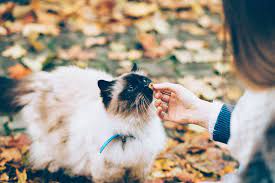
Training a cat may appear to be a difficult undertaking, but it is perfectly achievable with the appropriate technique. Positive reinforcement is a tried-and-true strategy for encouraging desired behavior in cats. Here are a few pointers regarding the best cat breeds and training you need to keep in mind:
- Make Use of Treats and Praise
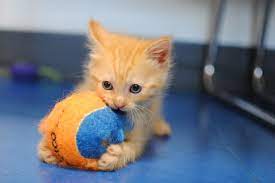
When cats display desirable behavior, they respond well to treats and praise. Reward your cat right after they complete the desired activity to reinforce the link between the behavior and the reward.
- Clicker Instruction

Clicker training entails using a small handheld clicker to note the precise instant your cat does something correctly. They link the click with a reward over time, making it easier to communicate your expectations.
- Importance of Consistency

Training must be done consistently. Make certain that everyone in your household follows the same commands and receives the same incentives for consistency. Cats thrive on predictability and routine.
- Toilet Training
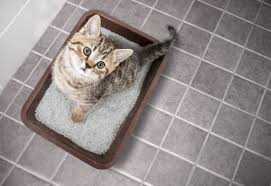
One of the earliest and most crucial behaviors to teach your cat is litter training. For effective litter training, follow these steps:
- Select the Appropriate Litter

Cats have preferences when it comes to litter. Experiment with different litters to find the one that your cat prefers.
- Provide an Appropriate Litter Box

The litter box should be large, easily accessible, and cleaned on a regular basis. Cats are particular about hygiene, so keeping the litter box clean is essential for encouraging regular use.
- Positive Reinforcement
Reward your cat for using the litter box with treats and praise. Avoid punishing them for accidents, since this can cause anxiety and aversion to the litter box.
Resolving Common Behavioral Issues
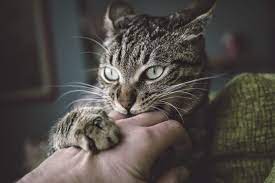
- Agressiveness
Cats may become aggressive for a variety of reasons, including fear, territorial disputes, or medical problems. To deal with aggression:
- Determine Triggers
Examine your cat’s behavior to see what makes them aggressive. When feasible, avoid or mitigate these triggers.
- Desensitization Gradually
If your cat is being aggressive because of fear or anxiety, gradually desensitize them to the source of their stress. This could entail exposing them to the trigger in a safe and non-threatening manner.
- Seek Professional Advice
Consider seeking the assistance of a professional animal behaviorist to address aggression issues in severe cases. Their guidance regarding the best cat breeds and training will prove crucial in producing effective outcomes.
- Furniture Scratching
Cats have an innate desire to scratch, which can be damaging to your furniture. To change this behavior, do the following:
- Provide Scratching Posts
Provide a variety of scratching posts with varying textures and heights. Encourage your cat to utilize them by providing goodies or catnip nearby.
- Employ Deterrents
To discourage scratching, use double-sided tape or pet-friendly deterrent sprays on furniture. Alternatively, use cat-friendly materials to cover furniture.
- Prolonged Meowing
Hunger, boredom, or illness are just a few causes of excessive meowing. Respond to this conduct by:
- Feeding on a Regular Basis
Set up a consistent feeding plan to suit your cat’s nutritional demands and prevent hunger-related meowing.
- Expansion
Toys, puzzles, and interactive play will keep your cat cognitively and physically busy, reducing meowing due to boredom.
- Health Examination
If excessive meowing persists, consult a veterinarian to rule out any underlying medical conditions.
Training for Special Skills

- Teaching Tricks
Cats may be trained not just for essential habits but also for enjoyable antics. Here are some cat tricks you can teach him:
- High Five
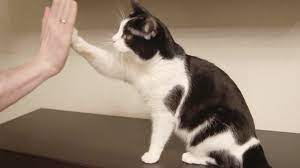
High-fiving is a simple yet effective trick that can be taught with the help of a clicker and treats. Allow your cat’s paw to gently touch your hand, then click and reward.
- Fetch

Some cats, believe it or not, can be taught to fetch small toys or things. Begin by using their favorite toy and rewarding them for returning it to you.
- Agility Practice
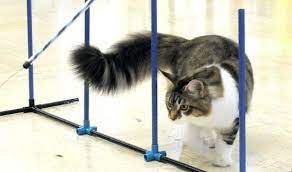
Agility courses, similar to those developed for dogs, can be put up for your cat. Make an interesting obstacle course with tunnels, hurdles, and hoops.
- Leash Walking Training

Leash training can be a terrific method to provide your cat with mental and physical activity while also keeping them safe outside. How to Teach Your Cat to Walk on a Leash
- Select the Appropriate Harness
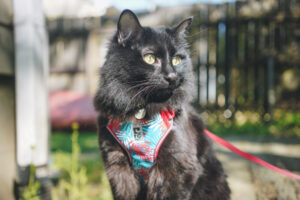
Choose a cat-specific harness that fits snugly but not too tightly. Traditional collars are not appropriate for leash walking since they can cause harm to your cat’s throat.
- Gradual Inclusion

Introduce your cat to the harness gradually, enabling them to become accustomed to wearing it indoors before attempting outdoor outings.
- Quick Walks
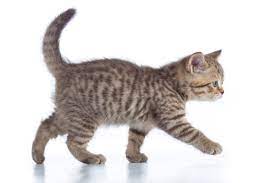
Begin with short walks in a known, safe setting. Treats can be used to reward your cat for walking with you and obeying commands.
- Socialization Training

Socializing your cat is critical for both their health and your peace of mind. To help your cat become more at ease with people and other pets, try the following:
- Gradual Exposition

Gradually introduce your cat to new situations, people, and animals. Begin with low-stress, controlled situations.
- Positive Reinforcement
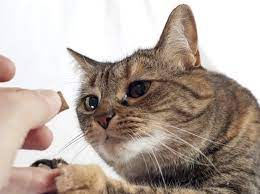
When your cat interacts positively with new people or animals, reward them with treats and praise.
- Be Consistent
Some cats may require more time to socialize than others. Patience and consistency are essential for socialization success.
Importance of Play
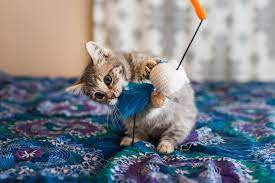
- Training through Play
Play is not only a source of fun for your cat, but it is also an important tool for training. Interactive play sessions allow cats to let off excess energy, build muscle, and strengthen their bond with you.
- Choosing the Proper Toys
Cats have specific toy preferences, such as feather wands, laser pointers, and interactive puzzle toys. Experiment to discover your cat’s favorite foods.
- Schedule Dedicated Playtime
Make time every day for interactive play. This routine teaches your cat when to expect stimulation, which helps to reduce undesirable behaviors associated with boredom.
Note: There might be affiliate links mentioned here. We may receive a commission if you purchase a product through an affiliate link. There is no additional charge for you. Please do your own research before making any online purchases.
- Supply Mental Stimulation
To engage your cat’s mind during playtime, include puzzle toys or treat-dispensing toys. Physical exercise is not as important as mental stimulation.
Positive Reinforcement’s Role in Training
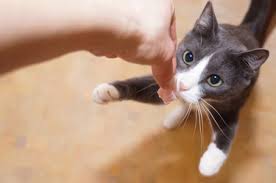
Positive reinforcement is a training method in which you reward your cat for displaying desirable behaviors. This method is extremely effective at shaping a cat’s behavior and has several key advantages:
- Improves the Bond
Positive reinforcement helps you and your cat form a strong bond. They associate you with pleasant experiences and are more likely to respond positively to your training efforts.
- Encourages Willing Participation
Cats are more willing to engage in training when they associate it with positive experiences. Treats, praise, and playtime motivate them to cooperate.
- Reduces Stress
Positive reinforcement is a stress-free training method. Cats are less likely to feel anxious or fearful when trained with rewards instead of punishment.
Training Challenges and Solutions
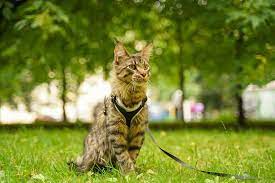
- Patience and Persistence
Training a cat can be a slow process, and it requires patience and persistence. If your cat is not responding as quickly as you’d like, don’t get discouraged. Keep the following tips in mind:
- Set Realistic Expectations
Cats learn at their own pace, and what works for one cat may not work for another. Be patient and adjust your training approach as needed.
- Consistency is Key
Consistency in training is vital. Cats thrive on routine, and repeated exposure to the desired behavior and rewards is essential for success.
- Fear and Anxiety
Some cats may be naturally anxious or fearful, making training a bit more challenging. Address these issues with care.
- Gradual Desensitization
Expose your cat to the source of their fear in a controlled, non-threatening way. Gradual desensitization can help them overcome their anxieties.
- Seek Professional Help
If your cat’s fear or anxiety is significant, consider visiting a professional animal behaviorist who can provide expert help. Follow their guidance on the best cat breeds and trainfor the for best results.
FAQs
What is the relevance of learning about different cat breeds?
Understanding different cat breeds is vital since it helps you recognize their distinct qualities, mannerisms, and care requirements. This understanding helps you adjust your training and care to fit the individual demands of your feline pet.
Can I train any cat, regardless of its breed or age?
Yes, you can train cats of any breed or age. While some cats may be more open to training than others, with patience and positive reinforcement, you can teach new habits or tricks to most cats. It helps you determine most trainable cat breeds from the less enthustatic ones.
How can I stop my cat from clawing furniture?
To stop your cat from scratching furniture, give alternative scratching posts, place deterrents on the furniture, and encourage your cat to utilize the posts. Consistency is key to changing this behavior.
Is it possible to train a cat to walk on a leash like a dog?
Yes, cats can be trained to walk on a leash. It’s important to use a cat-specific harness and introduce it gradually. With patience and positive reinforcement, many cats can enjoy outdoor walks safely.
What should I do if my cat exhibits aggressive behavior?
First, identify the triggers for your cat’s aggression. Then, work on gradual desensitization and consider consulting a professional animal behaviorist if the aggression is severe or persistent.
Can I teach my cat tricks, like a dog?
Absolutely! Cats can learn tricks like high-fiving, fetching, and agility. Positive reinforcement techniques, such as clicker training and treats, can be used to teach these tricks.
How do I train my cat effectively?
To litter train your cat, choose the right litter, provide a suitable litter box, and use positive reinforcement with treats and praise when your cat uses the litter box.
What is the best way to socialize a shy or fearful cat?
Socializing a shy cat requires gradual introduction to new events, people, and animals. Use positive encouragement and exercise patience during the process.
What are some common signs of discomfort or tension in a cat during training?
Excessive meowing, hostility, flattened ears, dilated pupils, or avoidance behaviors may indicate discomfort or stress during training. Recognizing these indicators is critical for changing your training strategy.
Why is positive reinforcement such an excellent cat training method?
Positive reinforcement works because it enhances your bond with your cat, stimulates willing engagement, and relieves stress. Cats correlate desired behaviors with positive experiences, which increases their willingness to cooperate during training.
Conclusion
Cats are amazing creatures with a vast range of personalities and attributes. Understanding their breed-specific qualities and communicating properly through training can lead to a pleasant and fulfilling connection between you and your feline friend. Whether you have a Siamese, Persian, Maine Coon, Bengal, or Ragdoll cat, this guide has provided essential insights into the world of most trainable cat breeds and how to develop their skills and behaviors.
Training a cat involves patience, perseverance, and a dedication to positive reinforcement. Whether you’re teaching them necessary skills, amusing tricks, or boosting sociability, the bond you develop through training is a gratifying experience for both you and your cat. By understanding best cat breeds and training related particular requirements and behaviors, you can train a happy and well-adjusted cat that brings joy to your life for years to come.




